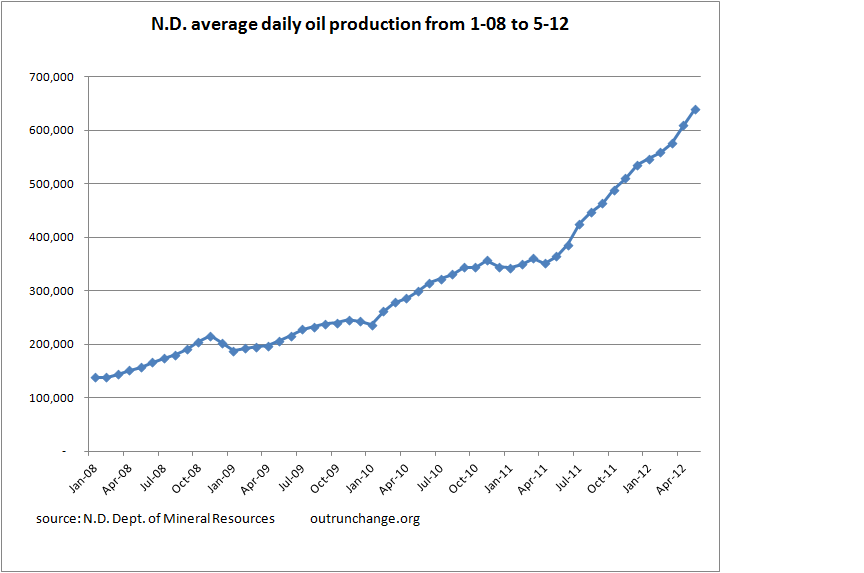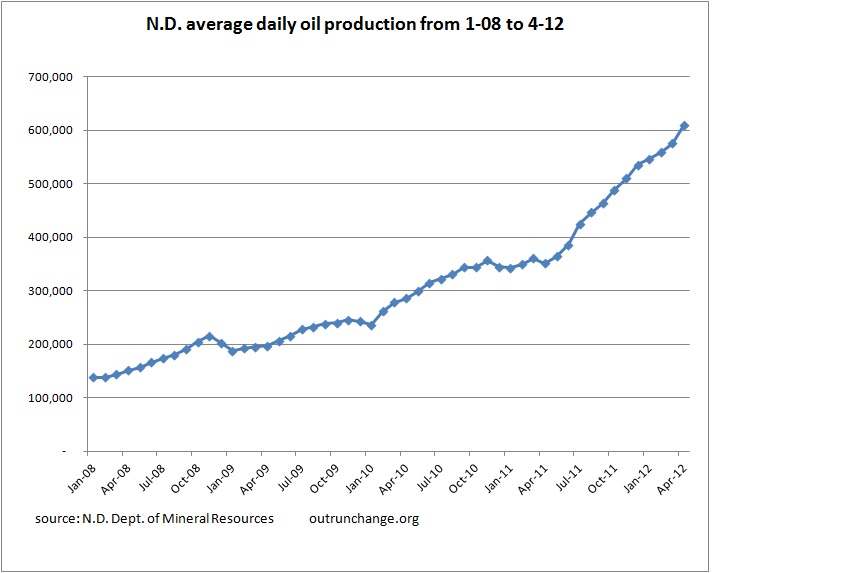Average daily oil production in North Dakota for May 2012 was 639,277 bopd, which is an increase of 29,904 barrels per day over April, or 4.9%. The April increase was 33,883 bopd, or 5.9% for the month. Increase in March was 17,235 bopd, or 3.1% over February.
Number of wells increased to 6,954.
You can find the data here.
Here is a graph of monthly production:

For some longer term perspective, here is the production data for the month of May over the last 5 years. Continue reading “Graph of North Dakota oil production – another record – May 2012”
